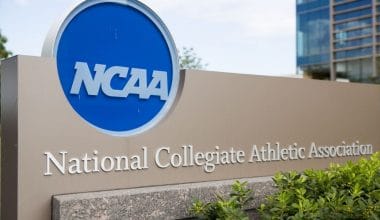Emailing a professor could be somewhat daunting. So it would be best to learn how to write an email to a professor before you do so.
Emailing a professor is different from emailing a friend or family member. Professional email etiquette is rarely taught, which makes sending that first email all the more difficult.
In this article, I’ll show you how to write an email to a professor. I’ll be sharing tips that will assist you in crafting an effective email that will elicit a response.
Table of contents
A step-by-step guide to writing an email to a professor
Here’s a step to step guide to write to your professor. Follow these steps and you’ll be on the right track.
The formal salutation
Begin your email to your lecturer with the words “Dear” or “Hello.” This is professional email etiquette 101, and it must be observed. “Hey” is too casual for this situation, and some educators believe “Hi” is too casual as well.
Title and surname
The title and name of the lecturer must follow the salutation. This may appear unnecessarily formal to you, but it is a crucial approach to show respect for your lecturer, their position, and their expertise. You may unwittingly upset your instructor if you omit the title or use the incorrect one.
Most professors and doctors should be addressed as “Professors” or “Doctor” followed by their last name. Before you hit the send button, double-check the spelling of their name.
Contextualize
Some instructors have hundreds of students and may require additional context to place you and answer your inquiry. This is especially true if this is your first email to them.
Telling them which of their classes you’re in and which day your class meets is the simplest way to help them find out who you are (if it has multiple sections.) You may omit this section if you are certain that your lecturer knows your name.
Read Also: How To Become a Professor | Fastest & Easiest Steps in 2024
Keep it brief
Professors receive many emails, so keep your request brief and to the point. Make your inquiry as explicit as possible so that your lecturer does not have to read the email several times to find out what you want.
You can also reduce the number of emails needed to answer your issue by briefly describing the measures you’ve already done to solve it. Checking the syllabus (a requirement before emailing any professor), questioning a classmate are examples of these.
Finishing Touches
Finish the email with a sign-off and your name. A simple “Best,” “Cheers,” or “Thanks” followed by your name would suffice. If your university email address does not include your entire name, you should include your first and last name in your sign-off. This will make it easier for the lecturer to locate you in their database.
Use a distinct subject line
A subject line is required for your email. A subject line helps the lecturer understand what you want and keeps your email out of the spam bin. The subject line should be short and to the point. “Question concerning [Class Name] paper” or “Meeting request” are good phrases.
Read Also: How To Write An Email To A Professor About Grades | Email Template
Maintain Professionalism
Your professional relationship with your lecturer should be reflected in your communication with them. This implies that when composing your letter, you must thoroughly spell out words and use proper language (including capitalization and punctuation). (Xanax)
There should be no emojis. They have become a standard mode of communication, yet they have no place in a professional email. Before sending the email, review it again to check for mistakes.
Send the mail from your university email address
Using your university email address gives your email a more professional appearance and ensures that it will pass past the institution’s spam filter. Your university email address also indicates to the professor that you are one of their students, which makes them more likely to take your communication seriously.
End an email with courtesy and a professional signature
How do you approach a professor? Thank them for their time and end your email with “Sincerely” or “Best wishes,” followed by your name.
Here’s an illustration:
Thank you very much for your time, and have a wonderful day.
Sincerely,
Brown, Lexie
Check your email for errors
Take note of your grammar, spelling, and punctuation. Maintain a formal tone and avoid emojis or informal acronyms such as FYI or ASAP. Please double-check the spelling of your professor’s name.
Put yourself in the shoes of your professor
Read the email again as if you were a professor receiving it. Is it evident who’s writing to you and what they’re looking for? Is the email’s tone pleasant and respectful? Is it by a? If all of your answers are “Yes,” please send your email.
Read Also: How to Write an Email to a Professor
Frequently Asked Questions
Address your professor by their title and last name, such as “Prof. Brent” or “Dr. Cliff.
In the American context, it is, however, common to address professors as “doctor”, or “Dr.” in writing to be slightly less formal. Sensitivity to titles is a personality issue. But if you want to be safe, write “Dear Dr. Jones” or “Dear Prof.
Conclusion
Conclusively, just as I stated up above, take out some time to check your class syllabus or assignment instructions before asking your professor a question via email. In many cases, professors will have already addressed several of the most frequently asked questions within the first few days of class at the beginning of the semester.
Before writing your professor, review all the materials you’ve acquired from the class. The last thing you want to do is bother them about something they’ve previously answered.
By thoroughly examining your material and ensuring that you still need to contact your professor, you can demonstrate a degree of devotion and respect.
Recommendation
- Valley View University international Scholarships in Ghana
- Utah Valley University Scholarships
- 13 Best Art Schools in Los Angeles | Rankings
- Top 10 Military Schools For Boys In USA | Ranking
- Best Film Schools In Los Angeles | Requirements, Cost, Programs





